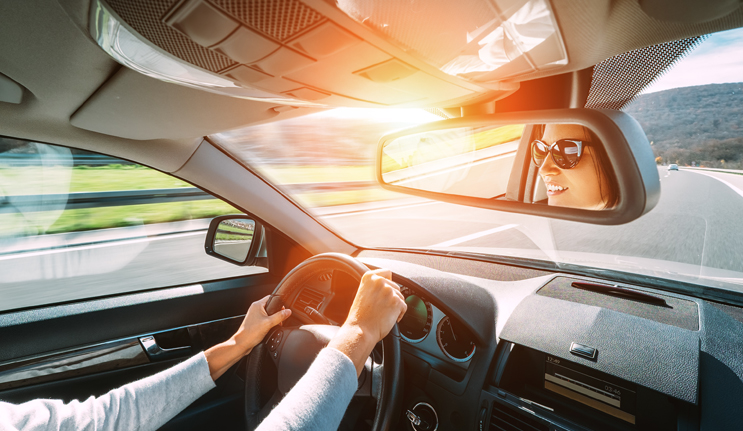Driving is not a right as much as it is a responsibility. Due to the testing and training involved with operating a motor vehicle, not everybody is knowledgeable or healthy enough to drive. Safe driving requires skill, constant focus, and a not-so-insignificant amount of patience.
If you’re hoping to improve your driving, the key is to master a specific set of skills. By practicing these things, you can hit the road much more safely.
Ditch the Distractions
Driving with distractions is extremely dangerous to everyone on the road. Motorists have been urged to put all distractions aside through texting and driving campaigns and legislation making it illegal to operate a vehicle while using distracting devices like cell phones.
These laws and awareness campaigns are justified by statistics that reveal how driving while distracted contributes to motor vehicle accidents. Motorists are urged to use hands-free driving assistance, such as mounting their phone on the windshield. Additional distractions include eating, changing radio stations and engaging in dialog with passengers in the vehicle.
Merge Into Traffic the Right Way
One important aspect of operating a motor vehicle involves knowing the safest way to merge into highway traffic without being an aggressive lane cutter. It’s important to remain calm while keeping with the pace of other vehicles in the flow of traffic.
Using the Zipper Merge Method is the safest and most efficient way to merge onto a highway. Merging traffic should continue traveling along the lane that will eventually disappear to maximize the usable road space. Toward the end of the merging lane, you should take turns with other merging vehicles in a “zipper-like” fashion. Remain calm while finding your opening to merge, and make the move into the other lane opening. Unless there is gridlock or extremely slow-moving traffic, it’s important never to come to a complete stop during the merging process.
Keep Up with Other Vehicles
After you successfully merge into traffic, it’s important to keep up with the flow of traffic. This doesn’t mean that you need to increase your speed excessively. Keeping up with the flow of traffic means that your vehicle isn’t driving slower than 5 miles per hour under the legally posted speed limit.
Included in keeping up with the flow of traffic is choosing the right lane for your current driving style, which means moving to the right lane if you’re driving slowly. Use the left lane to pass another vehicle that is driving slower than you and move back to the right lane after you pass the vehicle. Keep in mind, many states have enacted laws making it illegal to drive in the left lane of a highway unless you are passing another vehicle.
Remain Alert Behind the Wheel
When you first start driving, most of your rides will be for short distances. Driving a short distance makes it easy to maintain your focus, but in the future, you will be driving longer distances and for longer durations without taking a break.
No matter how far you are traveling, make sure to buckle your seat belt, and make sure your passengers do the same. Remain aware of road signs alerting you to speed limit changes, animal crossings, inclement weather, railroad crossings, construction zones, and other miscellaneous safety matters. Keep in mind that animal crossings may present extreme danger to you and other motorists, especially during the twilight periods (i.e., around dusk and dawn) when light levels are low.
Adjust to the Weather
While operating your motor vehicle, you will experience weather conditions that are common to the season and your region. Use caution on the roads during extreme weather conditions. Even though a rain shower isn’t in and of itself a hazardous driving condition, you should remember that the roadways will become slippery. It’s important to reduce your driving speed, turn on your headlights and keep up with the flow of traffic.
Beware of hydroplaning and losing control of your car, which can occur when driving too fast in the rain. On the other hand, driving too slowly makes your vehicle a dangerous obstacle for other drivers. Remember that driving during wet weather conditions means it will take longer to stop your vehicle.
Park Your Vehicle Precisely
Responsible driving includes parking your vehicle correctly. Don’t take up two spots with your vehicle. If your vehicle is too big for the spots available, find an area for overflow parking or you may wish to locate another area to park altogether. Also, don’t park over the designated lines to avoid getting hit or having your doors dinged by other cars.
Look into the Future
Part of driving responsibly involves predicting future events by looking ahead. For example, you should frequently be looking at the vehicle two spots ahead of you to anticipate developing situations. When the car that’s two cars ahead slams on their brakes, you will have more time to gradually and safely come to a stop. Leave a gap between your vehicle and the car ahead of you to allow extra space in the event you get rear-ended.
Use Your Turn Signal
In addition to the tips above, make sure to remember to use your vehicle’s turn signal. The turn signal is the best method for signaling your intentions to other drivers. However, many drivers don’t even use it. Be a defensive driver. Don’t unwaveringly trust other drivers on the road. Some drivers might be drunk, tired, inexperienced or distracted.
If you’re ever in doubt about situations you’ve encountered or might encounter on the road, there’s no shame in approaching trained driver’s education facilities with questions on how to stay safe. That self-awareness and humility can make all the difference when you’re behind the wheel.
About the Author

Samantha Tung is a contributing writer and media specialist for Caliber Collision. She often contributes content for a variety of car safety blogs.
Stay safe on the road with these online training courses:
Smartphones and Smarter Driving (Micro Course)



